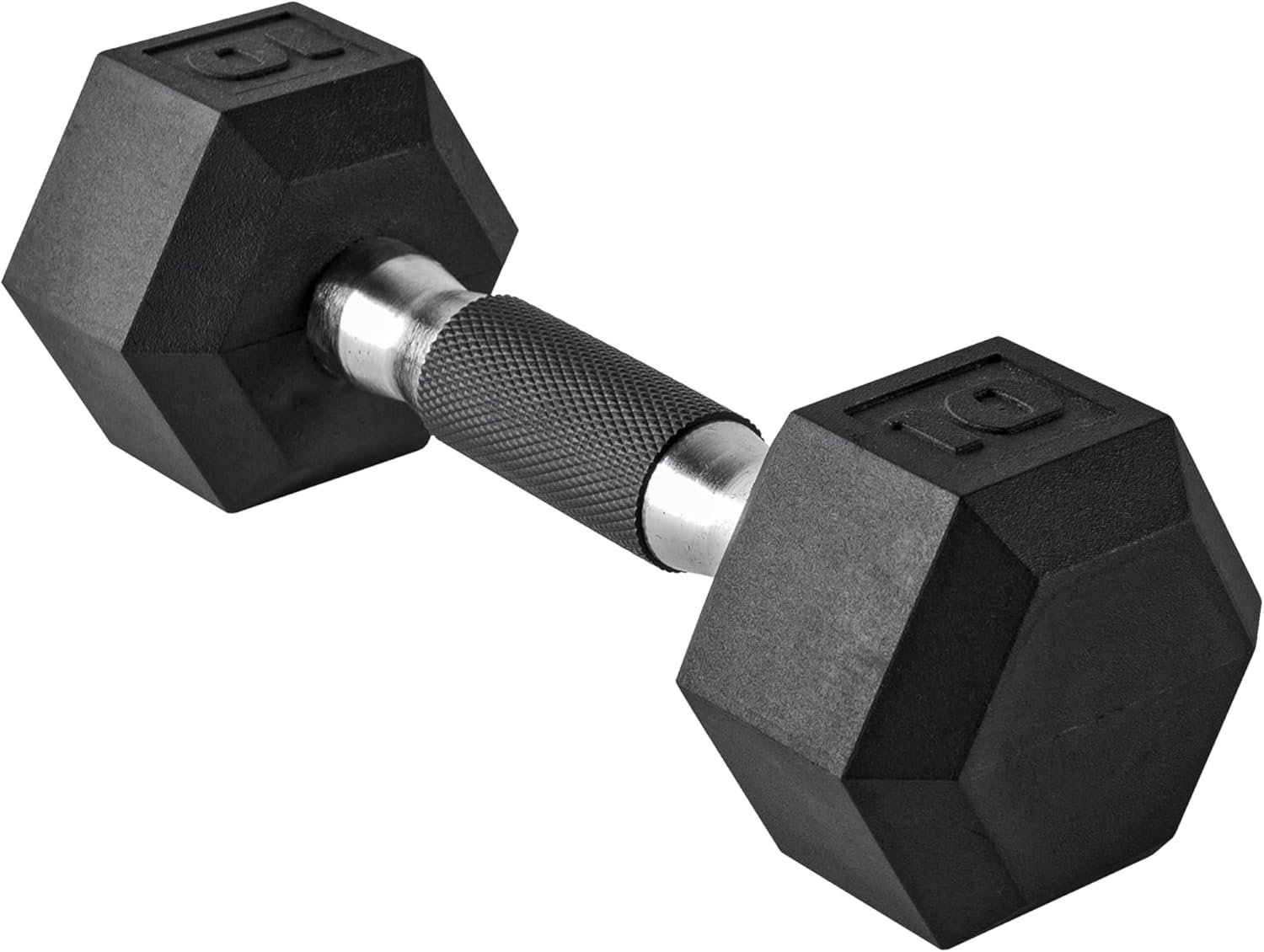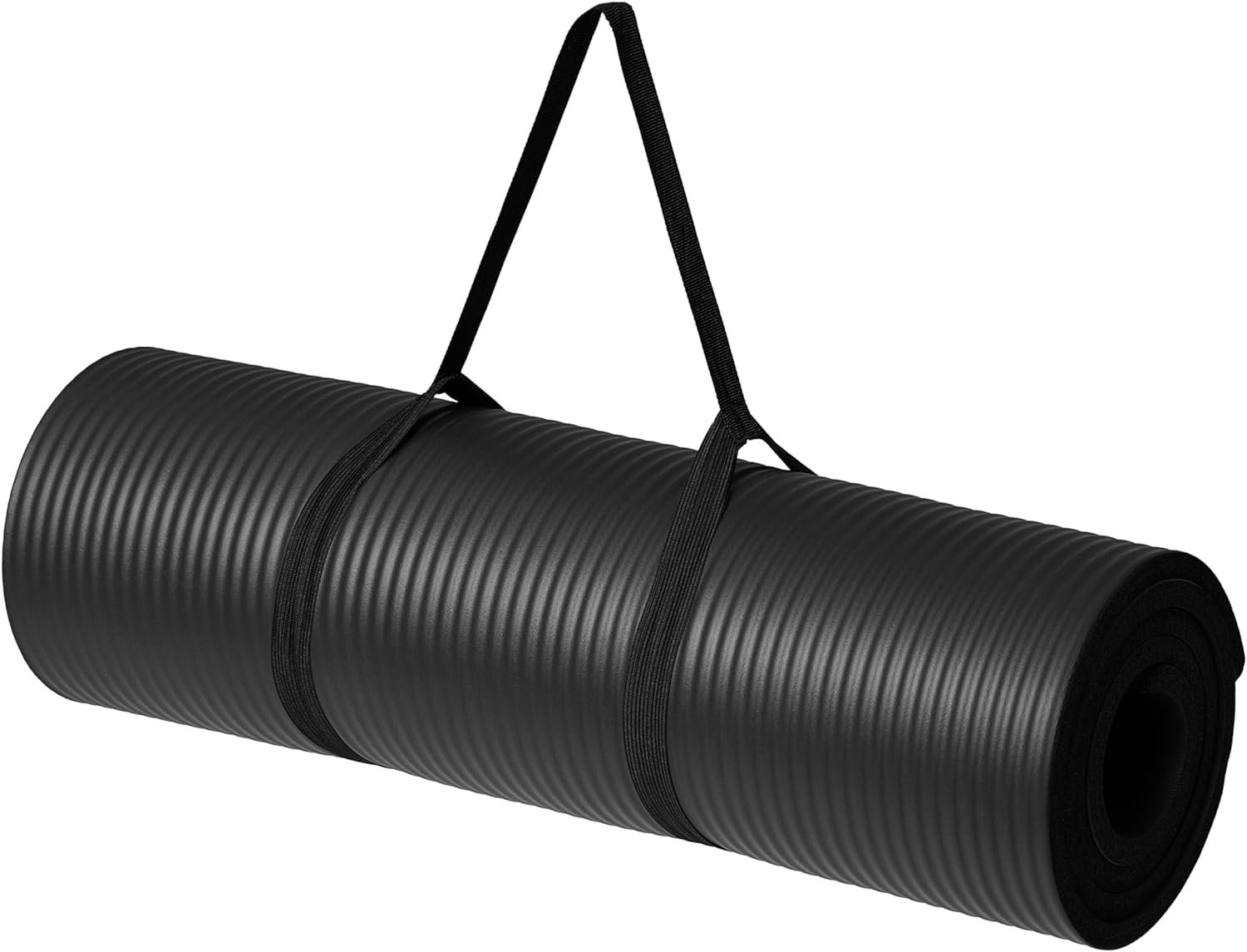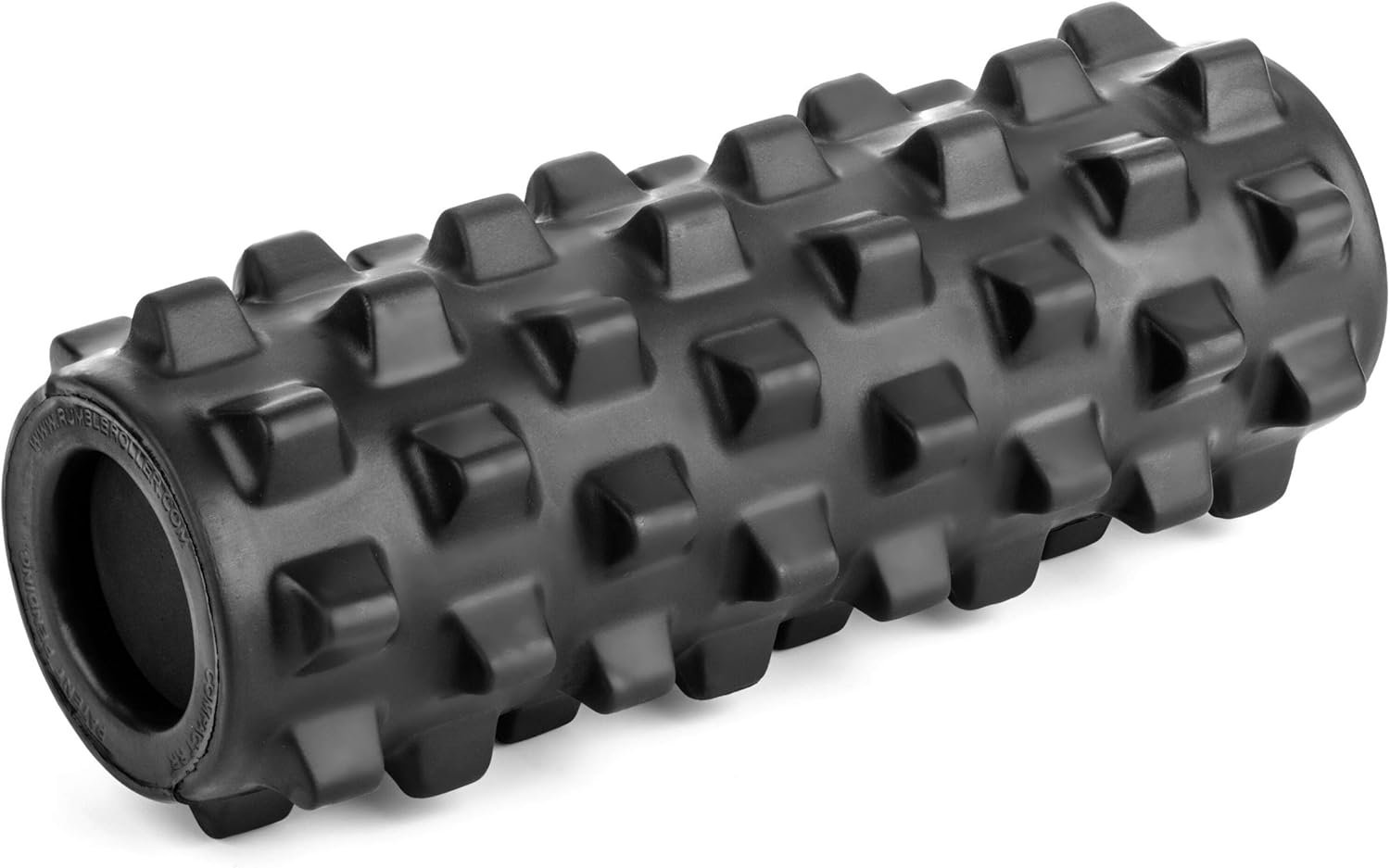Essential home exercise products that save space
The ideal home gym setup will be different for everyone. This list focuses on being efficient with both your money and your space. If neither of these are a factor, stay tuned for my blog post on the gear I find to be stellar when building out a full size home gym.
To start, let’s look at resistance gear for strength training.
*This page contains several affiliate links, meaning we’ll earn a small commission if you purchase through these links. Please view my disclaimer for more details.
Resistance Training
23-Pack Resistance Bands set
This is typically the first thing I recommend people get. The pack is super compact, pretty cheap, and will give you enough for a full workout. If you are used to using cable pull machines, these bands will allow you to replicate those motions (and more) but it is good to keep in mind that the resistance will feel different.
Notes to keep in mind…
Take the resistance listed on the bands (20lbs, 30lbs, etc.) as a gauge of Low to High. The numbers are not exact and will likely feel very different than a machine.
Also, these bands are what’s called “progressive resistance,” where the more you pull it the stronger the resistance gets. As opposed to cable machines where the resistance is consistent throughout the cable length. Not better or worse, just different and good to keep in mind as you use them.
When it comes to ankle weights, I like simplicity, versatility, and sturdiness. These check all three AND they have an option to order 10lbs for each leg (listed as 20lbs online).
The velcro on these wraps around your leg and immediately back onto itself, no need to loop through a metal ring and reverse direction with the strap. Simplicity!
These allow you to adjust the weight in 0.5lbs, 1lbs, or 2lbs increments, depending on which set you go with, (5lbs, 10lbs, and 20lbs respectively). Versatility!
I’ve been using the 20lbs version (10lbs on each leg) for over a year and they still hold up like they did on day one. The velcro and the sand bags have yet to wear out with regular use. Sturdiness!
Dumbbells are a pretty simple tool. There are two primary things I look for in dumbbells.
The bells have flat edges. Whether that means they’re square or hex shaped doesn’t matter. As long as they’re not round with the potential to roll away when you set them down. Many times in a workout, you’ll be setting your dumbbells down when you’re exhausted. Having to chase them as they roll off is an annoyance you don’t need, not to mention less safe.
The bells don’t have exposed metal, but are wrapped in either a rubber or other material that won’t be so abrasive on hard surfaces (hardwood floor, tile, etc). Most brands make their dumbbells this way, either fully wrapped in neoprene or vinyl (including the handle) or just wrapping the bells in rubber, leaving the handle to show off some chrome. The latter is the gym standard these days and tends to fit in dumbbell racks easier, which is the reason why I prefer dumbbells like the ones linked here. CAP has been in this business a long time and you can select a huge range of weights from 5lbs-105lbs.
There is one caveat to fixed weight dumbbells, and that is the amount of space they take up in a room. If you’re setting up your home gym for one person to use at a time, having a huge set of dumbbells may just be a waste of space and money.
This is where adjustable dumbbells come in. Though expensive at first glance, they’re typically much cheaper than buying all the individual dumbbells they replace, not to mention saving a ton of space.
I spent years waiting for a company to come out with what I envisioned an adjustable dumbbell set should be. Finally, Core Home Fitness did, and I’ve had their dumbbells for over a year now and couldn’t be happier with them.
The things I love about them…
Weights are adjusted by simply twisting the handle. This is the quickest way to adjust a dumbbell I’ve ever seen. And I love it! When I’m doing a HIIT workout, I love that I can pop the dumbbells onto the cradle and with a quick twist, immediately lift up a different resistance, without pausing my timer. And the handle twists with solid clicks, so I know how many clicks I need to turn to get the resistance I want.
Solid range of resistance. 5lbs to 50lbs, in 5lbs increments, all with the simple twist of the handle.
The bottom edge of the bells (or weight plates) are flat, so you can set the dumbbells down without them rolling away.
The length of the dumbbell changes as you add or reduce weight. Heavier weight = longer dumbbell; lighter weight = shorter dumbbell. Many adjustable dumbbells, like Bowflex SelectTech, keep the length of the dumbbell the same with whatever weight level you choose. No matter what weight you select, you have this huge contraption in your hand. The speed at which you can change weights is cool, but I find the Bowflex version to be bulky for light weight exercises.
*One caveat with these Core Home Fitness dumbbells, like other quick systems, is that you need the whole cradle to switch weights. So if you want these to be portable, you need to bring the whole dumbbell set (50lbs per dumbbell) with you. If you want a system that may not be as quick, but allows you to transport only what you need, check out the PowerBlock Adjustable Dumbbells.
WHY DIDN’T I MENTION KETTLEBELLS OR MEDICINE BALLS?
Kettlebells are limited in their use. Pretty much anything you can do with a kettlebell can also be done with a dumbbell. But a kettlebell can’t be used in all the same ways a dumbbell can. Thus the dumbbell is more versatile and includes that which a kettlebell can be used for. So for this list focusing on cost and space efficiency, I excluded them.
Medicine balls stand out from dumbbells in that they are meant to be tossed. I would not recommend throwing dumbbells around. Medicine balls are much better for that. However, most people working out at home are working out by themselves with no partner to toss the ball to. Or they don’t have a wall that is high and sturdy enough to bounce the ball off of. Therefore, I recommend most people prioritize getting a good set of dumbbells before purchasing medicine balls.
Exercise Mat
This really comes down to personal preference. Whether you like a lot of cushion or prefer something thin so you still feel the ground under bare feet, there are tons of shapes and sizes. I’ll mention two here that are best for portable use.
Thicker cushion
In the world of strength training, you are likely working out with shoes on and only using your mat for when you are lying on the ground. For this scenario, I prefer a little more cushion under me, so a mat like this ½” thick Amazon Basics ½” Thick Exercise Mat works great.
If you’re doing a lot of your workout in barefeet, like yoga or pilates, then feeling the ground a bit more may be preferable and give you more sturdiness when standing on the mat. For this scenario, any simple ¼” thick yoga mat will do like this Gaiam Essentials Premium Yoga Mat
Rolling & Stretching
For newcomers to fitness, rollers may be the most overlooked and yet most important piece of gear you have. Foam rollers and massage balls are essential tools for enhancing exercise routines. Regular use can improve overall mobility, making it easier to perform movements with proper form, which is crucial for preventing injuries. Additionally, foam rolling can serve as a great warm-up or cool-down method, contributing to better performance during workouts and aiding in quicker recovery afterwards.
There are tons of different foam rollers on the market of various shapes and sizes, and even battery powered ones that vibrate as you roll. Most rollers I find more expensive than their gimmick is beneficial.
3-Foot Long High Density Foam Roll
3 feet is the standard length of any foam roll in a gym because it allows you to lay the length of your spine along it. This allows you to perform some great shoulder and chest opening exercises, in addition to the great relief you get from rolling your other muscles on it. Shorter foam rolls tuck away nicely, but you miss out on many of the great upper body opening exercises. This high density roll I find to be strong enough for most people. But if you find it to be too hard to roll on, try this
If a standard High Density Foam Roll is too intense on your body, then it’s worth trying this Yes4All Soft Density Foam Roll and seeing if that’s more tolerable. However, I typically recommend seeing if you can tolerate the High Density Roller first, because the tougher the roller, the more effective it can be. But not if it’s completely intolerable.
If a standard foam roller doesn’t quite dig in enough, then you might be ready to level up to something like this RumbleRoller. It has extra firm knobs that stick out to perform a “trigger point” technique on your muscles. Don’t be fooled, there is a brand called Trigger Point that makes rollers that I don’t find to be very effective in creating an actual “trigger point” effect. A roller like this RumbleRoller has knobs solid enough to really dig in and create that trigger point release.
What is a trigger point release? Simply put, it’s when you dig into a knot in your muscle for about 30 seconds to trigger a release of that knot. It’s not comfortable, but can be very necessary on big knots that can cause pain even at rest. And this roller has be very helpful for me and my clients.
12” is long enough for this one since you’ll likely never lay the length of your spine along it.
A massage ball is great for digging deeper into areas of your body that a foam roller can’t quite get to. This is especially true for the muscles in your upper back and neck, where there are a lot of bony protrusions to work around. They’re also great for travel as they fit tight in your luggage and can still be used on most any muscle in your body, including your legs.
I like the ones linked here because of their extra firmness, though you can find softer ones as well.
A stretch strap I like to be long enough that you don’t have to hunch or round your spine to hold a stretch. Many straps I find to be too short for someone with tight muscles. This 12 Foot Long Gradient Fitness Stretch Strap I find to be a great size for anyone. 12 feet might seem like a lot, but keep in mind you lose half the length if you wrap the middle of the strap around the bottom of your foot.
The slim grip should be good enough, though if you want more width to the strap, feel free to try the wide grip.
Conclusion
What equipment ends up being the ideal home setup will be different for everyone. The equipment I listed here is what I have found over the years to be cost and space efficient, while being versatile in their use case. This way, you get an effective home workout without gimmicky equipment.
If you're curious how best to use this equipment, hit me up and let’s discuss some options that will best fit your goals and your body’s needs. If you’re a new client, book a free strategy session to discuss a possible game plan.












